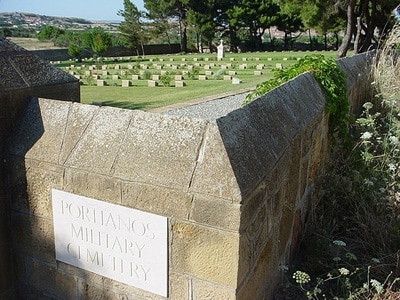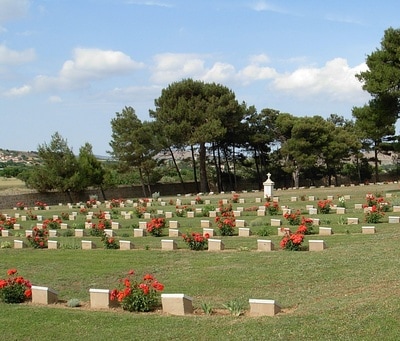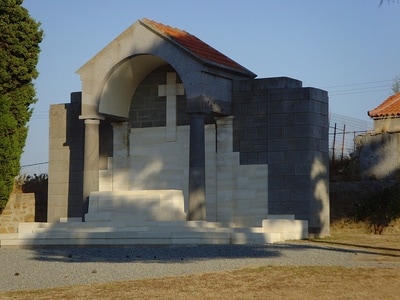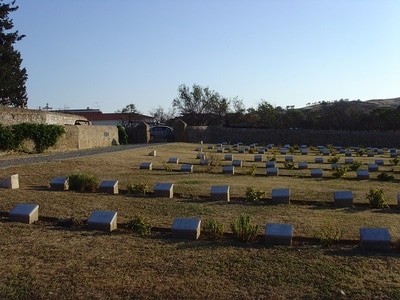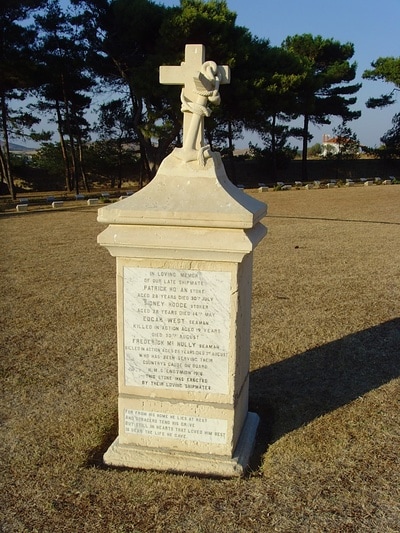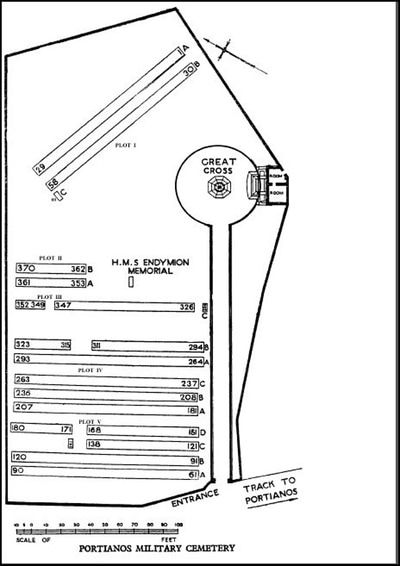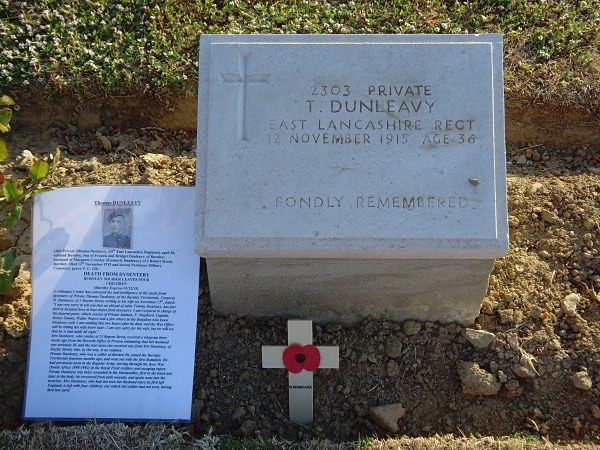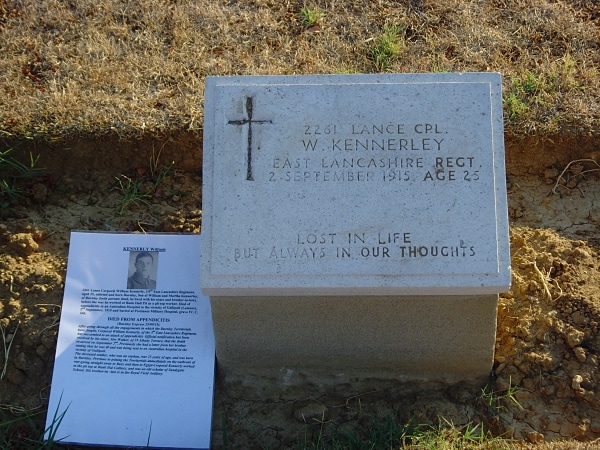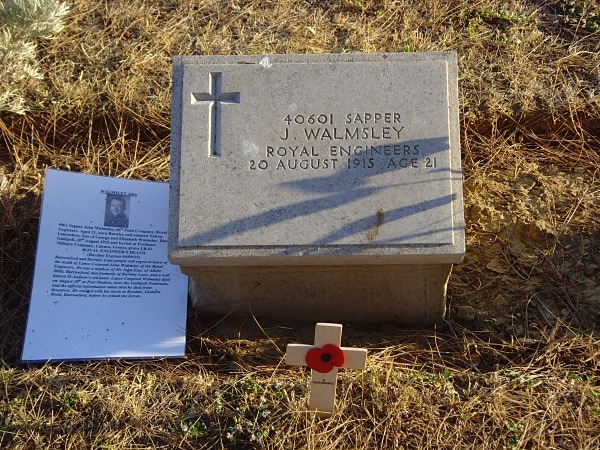PORTIANOS MILITARY CEMETERY
Limnos (Lemnos) Island
Greece
Location Information
The village of Portianos is on the west side of Mudros Bay, on the Greek island of Limnos (Lemnos) in the north-east Aegean Sea. The cemetery is on the outskirts of the village, on Anzac Street, adjacent to the communal cemetery.
Take the national road of Myrina – Mudros until you come to the traffic lights next to Livadochori Village. Turn right at the traffic lights and follow the sign posts to Portianos. Continue on this road for around 5-6 km passing by or through the villages of Kalithea, Nea Koutali, and Neo Pedino. Upon entry to the village you shall find clearly marked CWGC signs which shall lead you to the cemetery.
Visiting Information
The Cemetery is permanently open and may be visited at any time.
Historical Information
Because of its position, the island of Lemnos played an important part in the campaigns against Turkey during the First World War. It was occupied by a force of marines on 23 February 1915 in preparation for the military attack on Gallipoli, and Mudros became a considerable Allied camp. The 1st and 3rd Canadian Stationary Hospitals, the 3rd Australian General Hospital and other medical units were stationed on both sides of Mudros bay and a considerable Egyptian Labour Corps detachment was employed. After the evacuation of Gallipoli, a garrison remained on the island and the 1st Royal Naval Brigade was on Lemnos, Imbros and Tenedos for the first few months of 1916.
On 30 October 1918, the Armistice between the Entente Powers and Turkey was signed at Mudros.
Portianos Military Cemetery was begun in August 1915 and used until August 1920. The cemetery now contains 347 Commonwealth burial of the First World War and five war graves of other nationalities.
Pictures © Andy Mackay unless stated otherwise
The village of Portianos is on the west side of Mudros Bay, on the Greek island of Limnos (Lemnos) in the north-east Aegean Sea. The cemetery is on the outskirts of the village, on Anzac Street, adjacent to the communal cemetery.
Take the national road of Myrina – Mudros until you come to the traffic lights next to Livadochori Village. Turn right at the traffic lights and follow the sign posts to Portianos. Continue on this road for around 5-6 km passing by or through the villages of Kalithea, Nea Koutali, and Neo Pedino. Upon entry to the village you shall find clearly marked CWGC signs which shall lead you to the cemetery.
Visiting Information
The Cemetery is permanently open and may be visited at any time.
Historical Information
Because of its position, the island of Lemnos played an important part in the campaigns against Turkey during the First World War. It was occupied by a force of marines on 23 February 1915 in preparation for the military attack on Gallipoli, and Mudros became a considerable Allied camp. The 1st and 3rd Canadian Stationary Hospitals, the 3rd Australian General Hospital and other medical units were stationed on both sides of Mudros bay and a considerable Egyptian Labour Corps detachment was employed. After the evacuation of Gallipoli, a garrison remained on the island and the 1st Royal Naval Brigade was on Lemnos, Imbros and Tenedos for the first few months of 1916.
On 30 October 1918, the Armistice between the Entente Powers and Turkey was signed at Mudros.
Portianos Military Cemetery was begun in August 1915 and used until August 1920. The cemetery now contains 347 Commonwealth burial of the First World War and five war graves of other nationalities.
Pictures © Andy Mackay unless stated otherwise
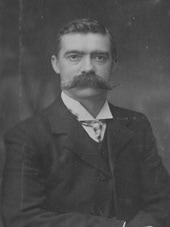
74664 Corporal
Sidney Herbert Blackmore
Mudros Signal Section, Royal Engineers
Died of meningitis 19th June 1916, aged 49.
Plot III. C. 339.
Son of James and Sarah Blackmore, of Clevedon, Somerset, husband of Charlotte M. Blackmore, of 17, Monk Rd., Bishopston, Bristol.
Picture courtesy of David Blackmore
Sidney Herbert Blackmore
Mudros Signal Section, Royal Engineers
Died of meningitis 19th June 1916, aged 49.
Plot III. C. 339.
Son of James and Sarah Blackmore, of Clevedon, Somerset, husband of Charlotte M. Blackmore, of 17, Monk Rd., Bishopston, Bristol.
Picture courtesy of David Blackmore
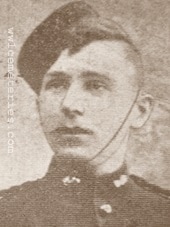
2303 Private
Thomas Dunleavy
1/5th East Lancashire Regiment
Died of Wounds 12th November 1915, aged 35
Plot V. C. 136.
Son of Francis and Bridget Dunleavy, of Burnley
Husband of Margaret Crossley (Formerly Dunleavy), of 2 Robert Street, Burnley. Lived at 25 Regent Street, Burnley.
Thomas Dunleavy
1/5th East Lancashire Regiment
Died of Wounds 12th November 1915, aged 35
Plot V. C. 136.
Son of Francis and Bridget Dunleavy, of Burnley
Husband of Margaret Crossley (Formerly Dunleavy), of 2 Robert Street, Burnley. Lived at 25 Regent Street, Burnley.
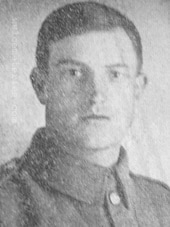
2261 Lance/Corporal
William Kennerley
1/5th East Lancashire Regiment
Died 2nd September 1915, aged 25.
Plot IV. C. 260.
Lived at 19 Albany Terrace
Son of William and Martha Kennerley, of Burnley (both parents dead, he lived with his sister and brother-in-law)
William Kennerley
1/5th East Lancashire Regiment
Died 2nd September 1915, aged 25.
Plot IV. C. 260.
Lived at 19 Albany Terrace
Son of William and Martha Kennerley, of Burnley (both parents dead, he lived with his sister and brother-in-law)
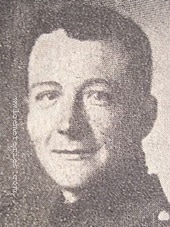
40601 Sapper
John Walmsley
66th Field Coy. Royal Engineers
20th August 1915, aged 21.
Plot I. B. 43.
Son of George and Elizabeth Walmsley, of Burnley, Lancs.
John Walmsley
66th Field Coy. Royal Engineers
20th August 1915, aged 21.
Plot I. B. 43.
Son of George and Elizabeth Walmsley, of Burnley, Lancs.

